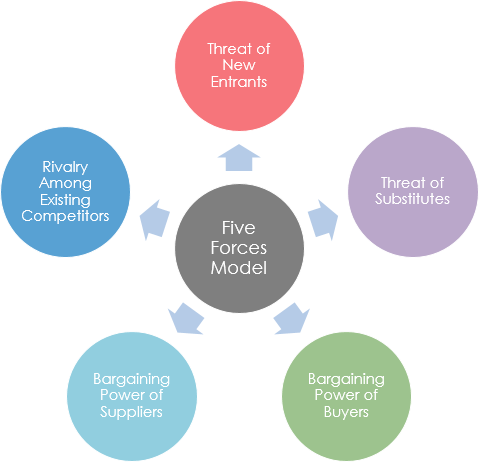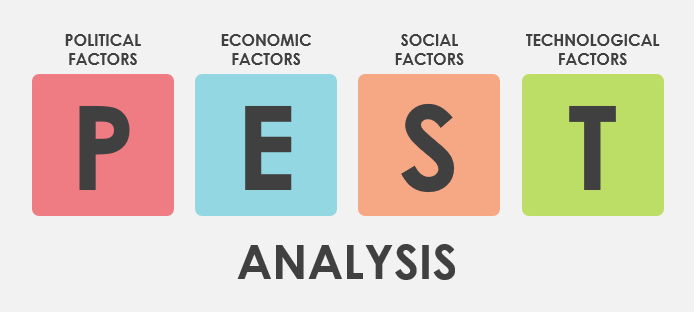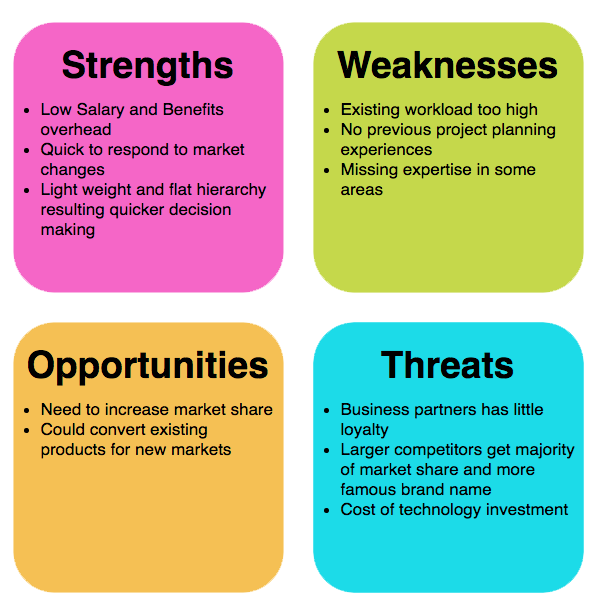A powerful business evaluation tool set for enterprises to understand the competitive dynamics of the industry
Industry analysis is a tool to help companies understand their position relative to other companies producing similar products or services. It is a market evaluation tool used by enterprises and analysts to understand the competitive dynamics of the industry. This helps them understand what is happening in an industry,
For entrepreneurs or companies, industry analysis is a way to understand the company’s position relative to other participants in the industry. This will help them identify future opportunities and threats and give them a clear understanding of the current and future scenarios of the industry. The key to survive in this changing business environment is to understand the differences between yourself and industry competitors and make full use of them.
The Three Major Element of Industry Analysis
Industry analysis includes three elements:
- The competitiveness in an industry;
- The macro-environmental factors; And
- The key factors that determine the company’s success in the industry.
There are three common analysis tools to perform industry analysis corresponding to the above three main elements.
The three tools are:
- Porter’s 5 Forces — Analyze the competitiveness in an industry
- PEST Analysis — Analyze the macro-environmental factors
- SWOT Analysis — Analyze the key factors that determine the company’s success in the industry.
The Five Forces analysis
In 1979, Michael E. Porter of Harvard Business School proposed the Five Forces analysis of competitive position as a simple framework for assessing and evaluating the competitive strength and position of business organizations.
Strategic analysts often use Porter’s five forces to understand whether new products or services have potential profit potential. By understanding where power is, the theory can also be used to identify areas of strength, improve weaknesses and avoid mistakes.
What is Porter’s Five Forces Analysis — Analyze the competitiveness in an industry
Porter’s Five Forces Analysis makes a strong assumption that there are only five important forces that could determine the competitive power in a business situation.

Using the following three steps:
- Identify the different factors that bring about the competitive pressures for each of the five forces as shown in the Figure above:
- Who are the suppliers?
- Who are the customers?
- What are the substitute products?
- Is it difficult to enter this industry?
- Who are the major competitors in this industry?
2. Based on the factors identified, determine if the pressures are:
- Strong
- Moderate
- Weak
3. Determine whether the strength of the five forces is favorable to earning attractive profits in the industry. Using the Five Forces model can help answer the following questions:
- Is the state of competition in the industry stronger than “normal”?
- Can companies in this industry expect to earn decent profits in light of the competitive forces?
- Are the competitive forces sufficiently powerful enough to undermine industry profitability?
What is PEST Analysis — Analyze the macro-environmental factors
The PEST analysis is a useful tool for understanding market growth or decline, and as such the position, potential and direction for a business. PEST is an acronym for Political, Economic, Social and Technological factors, which are used to assess the market for a business or organizational unit. Sometimes it’s expanded to include legal and environmental factors and called a PESTLE analysis.

A PEST analysis guides us to identify effective strategies for setting priority, allocating resources, planning for time and development roadmap and formulating control mechanisms. With this analysis, you can identify potential opportunities and threats associated with your strategy and figure out ways to take advantage of them and avoid them.
Political Factors
These are all about how and to what degree a government intervenes in the economy. This can include — government policy, political stability or instability in overseas markets, foreign trade policy, tax policy, labour law, environmental law, trade restrictions and so on.
It is clear from the list above that political factors often have an impact on organizations and how they do business. Organizations need to be able to respond to the current and anticipated future legislation, and adjust their marketing policy accordingly.
Economic Factors
Economic factors have a significant impact on how an organisation does business and also how profitable they are. Factors include — economic growth, interest rates, exchange rates, inflation, disposable income of consumers and businesses and so on.
These factors can be further broken down into macro-economical and micro-economical factors. Macro-economic factors deal with the management of demand in any given economy. Governments use interest rate control, taxation policy and government expenditure as their main mechanisms for managing macro-economic factors.
Micro-economic factors are all about the way people spend their incomes. This has a large impact on B2C organizations in particular.
Social Factors
Also known as socio-cultural factors, social factors are the areas that involve the shared belief and attitudes of the population. These factors include — population growth, age distribution, health consciousness, career attitudes and so on. These factors are of particular interest as they have a direct effect on how marketers understand customers and what drives them.
Technological Factors
We all know how fast the technological landscape changes and how this impacts the way we market our products. Technological factors affect marketing and the management thereof in three distinct ways:
- New ways of producing goods and services
- New ways of distributing goods and services
- New ways of communicating with target markets
Analyzing these factors will help you and your team gain a comprehensive understanding of the external (macro environmental) factors that may positively or negatively affect your company’s strategic planning process. With access to such knowledge, you can quickly come up with strategies that would put the company on the fast track to achieving its goals.
SWOT Analysis — Analyze the key factors that determine the company’s success in the industry.
SWOT analysis is a technique developed at Stanford in the 1970s, frequently used in strategic planning. SWOT is an acronym for Strengths, Weaknesses, Opportunities, and Threats and is a structured planning method that evaluates those four elements of an organization, project or business venture. A SWOT analysis is a simple, but powerful, framework for leveraging the organization’s strengths, improving weaknesses, minimizing threats, and taking the greatest possible advantage of opportunities.

Basic Concepts of SWOT Analysis
The SWOT analysis will help you understand the company’s position which will encourages ideas and decision-making on how to build on strengths, exploit opportunities, minimize weaknesses and protect against threats. Below are four benefits of using a SWOT analysis for your business:
- Identify Core Competencies — It provides a clear view of your core competencies, and allows you to build on them to meet your business objectives
- Identify Weaknesses — Recognizing your company’s weaknesses is one of the first steps to improving your business. It reveals your weaknesses and provides a chance to reverse them
- Explore Opportunities — It helps your to explore the opportunities that lies ahead. Using this you can draft your strategic growth plans based on your strengths and weaknesses
- Recognize Potential Treats — It helps you analyze possible threats to your business, and you can subsequently make necessary changes to the business policies and necessary actions. Additionally, it facilitates making supplementary or alternative plans, contingency plans, and so on.
As you use the SWOT Analysis for planning, you align the positive elements to help take advantage of opportunities and identify the gaps in the negative elements that must be improved or managed. Driving to implications from the SWOT requires us to take a strategic leap, looking at the connections across the categories (e.g. where does a strength help us mitigate a threat), as well as looking holistically across for trends.
Conclusion
Industry analysis helps enterprises understand the market situation which reveals the competitiveness of the industry and the costs associated with entering and exiting the industry. This is particularly useful when planning startups and small businesses.
Comprehensive industry analysis can help small business owners formulate effective strategies and make the most effective use of the limited resources of small businesses. It helps to determine which stage an industry is currently in; Whether it is still growing, whether there is room for income, or whether it has reached the saturation point.





